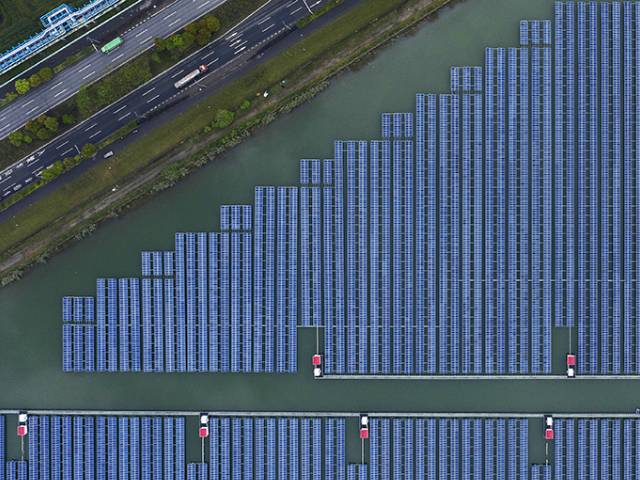Sungrow FPV is the first company to receive a Statement of Conformity according to the newly published Recommended Practice DNVGL-RP-0584 for their anchoring and mooring design methodology.
DNV, the independent energy expert and assurance provider, has awarded a Statement of Conformity to the Chinese Solar Energy company Sungrow FPV, a provider of floating solar PV (FPV) for inland water and coastal areas, for its anchoring and mooring design methodology for FPV systems.
The Statement of Conformity is the first of its kind to refer to the DNVGL-RP-0584, Recommended Practice for Design, development and operation of floating solar photovoltaic systems, published in March this year. The Statement of Conformity was issued after a thorough verification process, based on the requirements and recommendations of DNVGL-RP-0584 concerning design methodology for anchoring and mooring of FPV plants.
Floating solar has become an increasingly popular solution for installation of renewable energy in areas with space constraints, however anchoring and mooring failures have proven to be a threat and a major risk for FPV installations around the world, with more than a few cases of accidents being recorded. It is important to put a strong focus in floating solar projects to ensure proper and accurate design of these components, to avoid more accidents and a detrimental effect on the development and progress of the whole floating solar segment.
The Statement of Conformity verifies that the design methodology for anchoring and mooring of Sungrow FPV, including design principles, methods and safety factors, complies with the recommended practice, and it is considered adequate to be implemented in design of future FPV projects. Project specific requirements, as well as correct site-specific environmental conditions, will need to be considered when applying the design methodology.
DNV’s 2021 Energy Transition Outlook forecasts Solar PV will see a 20-fold growth over the forecast period to 2050. A high technology cost-learning rate of presently 26% per capacity doubling explains much of this growth. Solar PV + storage and the production of green hydrogen will help solar contend with a low capture price for the electricity generated. Within the growing Solar PV industry, floating solar is still a niche, but growing rapidly.
Recent estimates for the global installed capacity of floating solar are above 3 GWp, with wide-spread consensus among industry players that the capacity is expected to reach 10 GWp before the end of 2025. A report from the World Bank estimates the global potential of floating solar, under moderate assumptions, is more than 4 TWp on man-made reservoirs alone, without accounting for coastal and offshore areas.
“At Sungrow FPV we provide customized multi-scene anchoring and mooring system design services. We are honoured to be able to say now that our design methodology complies with the requirement of DNVGL-RP-0584 for design, development and operation of floating solar photovoltaic systems. With correct implementation this will help to ensure the reliability and robustness of mooring and anchoring system in the full life cycle of FPV. We would like to thank DNV for the cooperation in achieving this milestone and are excited to continue collaborating in Sungrow FPV mission to provide one-stop mooring and anchoring design, actively escorting the construction and operation of FPV.” said Tia Qin of Sungrow FPV.

“The floating solar market is growing quickly and expanding from Asia, which still retains the highest market share, to Europe and other areas of the world. To enable the growth of this exciting renewable technology, DNV is pleased to provide assurance of this methodology utilized by our customers on their projects thereby enhancing safety and operability of them. We do this by bringing together our combined knowledge from years of experience in the solar and water domains that has been central in developing the recommended practice against which we provide such assurance.” added Prajeev Rasiah, Executive Vice President for Energy Systems, Northern Europe at DNV.









































